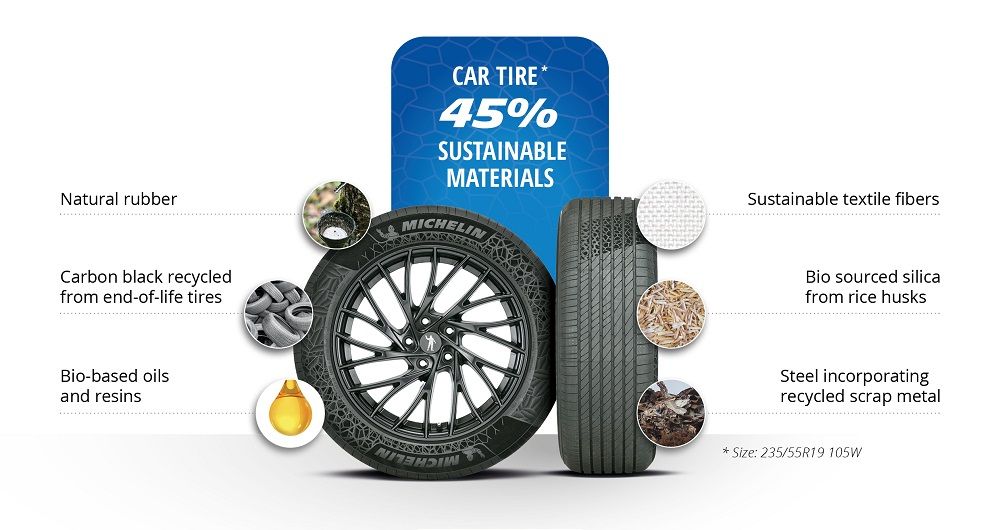17-07-2023
Michelin car tire containing 45% sustainable materials wins the AutomotiveINNOVATIONS Award 2023 in Frankfurt
The award commends Michelin’s commitment to producing tires containing 100% sustainable materials by 2050, with an interim target of 40% by 2030.
An award in the ‘Chassis, Car Body & Exterior’ category for Michelin road-approved car tires, containing 45% sustainable materials.
A unique sustainable materials strategy which stands out for its high standards, scope, partnership dimension and overall vision.

On July 13 in Frankfurt, Michelin received the AutomotiveINNOVATIONS Award 2023 in the ‘Chassis, Car Body & Exterior’ category for its road-approved car tires containing 45% sustainable materials. The award was presented by PricewaterhouseCoopers (PwC) and the Center of Automotive Management (CAM) which, for over a decade, has conducted studies with manufacturers and suppliers to identify major innovations in the automobile industry. For the occasion, a jury was composed of seasoned figures from the industry, the world of science and consulting, as well as the specialized media.
MICHELIN’S SUSTAINABLE MATERIALS STRATEGY IS UNIQUE IN TERMS OF ITS HIGH STANDARDS, SCOPE, PARTNERSHIP DIMENSION AND COMPREHENSIVE APPROACH THROUGHOUT THE PRODUCT’S LIFE CYCLE
A STRINGENT DEFINITION FOR SUSTAINABLE MATERIALS
A FAR-REACHING SUSTAINABLE MATERIALS VISION, DEPLOYED ACROSS ALL OF THE GROUP’S PRODUCTS
AN UNPRECEDENTED PARTNERSHIP DIMENSION TO ACCELERATE RESEARCH AND INNOVATION
A COMPREHENSIVE APPROACH SPANNING THE ENTIRE LENGTH OF A PRODUCT’S LIFE CYCLE
AN AWARD WHICH COMMENDS MICHELIN’S COMMITMENT TO PRODUCING TIRES CONTAINING 100% SUSTAINABLE MATERIALS BY 2050, WITH AN INTERIM TARGET OF 40% BY 2030
Unveiled in 2022, the 45% sustainable materials tire incorporates technologies which will feature in standard tires in 2025. It enables Michelin to take a further step towards the large-scale development of new sustainable materials. It illustrates Michelin’s innovation capacity, as well as the strides made by the Group to uphold its commitments to promote global production, obtained exclusively using renewable or recycled materials by 2050, with an interim target of 40% on average by 2030.
To adhere to its extremely ambitious roadmap, Michelin is bolstered by its expertise in the field of cutting-edge materials, as well as by its entire R&D department, composed of 6,000 engineers, researchers, chemists and developers worldwide. It is to all of these teams that I dedicated this award.
Don't miss anything!
Spokespersons
Discover the Group's spokespersons